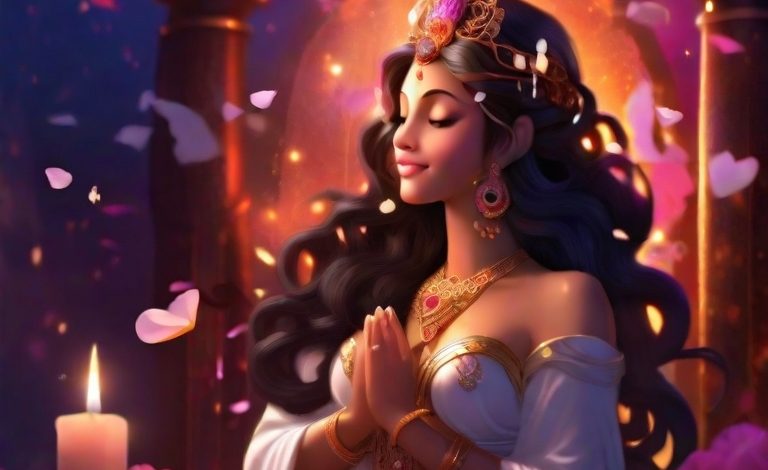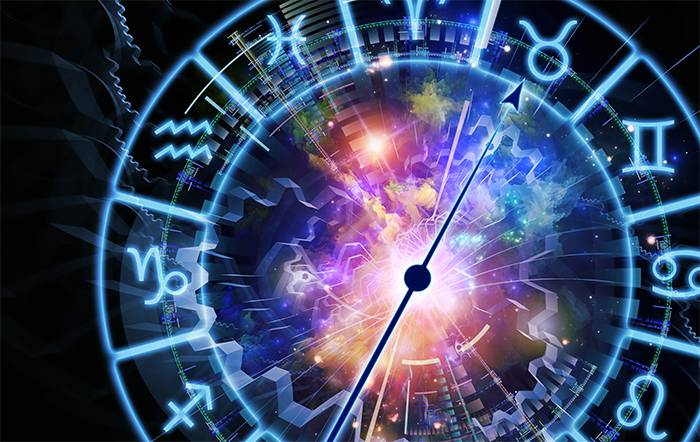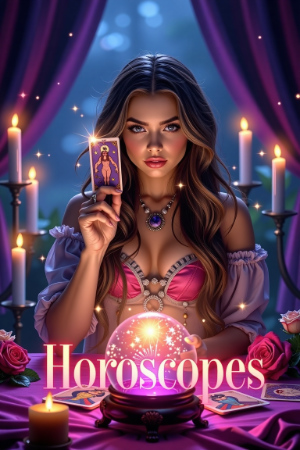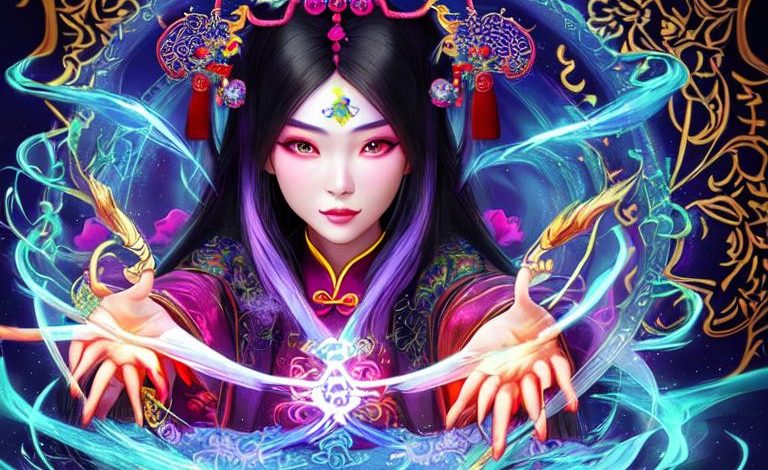
Welcome, witches and warlocks, to a bewitching journey into the fascinating world of Chinese superstitions. As practitioners of magic and the supernatural, we know that beliefs and practices that may seem superstitious to others hold powerful energy and significance for those who practice them. In Chinese culture, superstitions have been an integral part of daily life for thousands of years and continue to hold sway over the hearts and minds of many.
The ancient Chinese civilization believed in a world of spirits, gods, and demons, and superstitions played a significant role in their understanding of the natural and supernatural world. Many of these superstitions revolve around the concept of “qi,” or life force, which is believed to flow through everything in the universe. Maintaining a balance of this energy is considered essential for good health, fortune, and prosperity.
As witches, we know that the power of intention and symbolism can manifest in physical reality, and many Chinese superstitions employ these same principles. From the use of lucky numbers and colors to the placement of objects in the home, these practices are all designed to harness positive energy and ward off negative influences.
One of the most famous and intriguing aspects of Chinese superstitions is the practice of Feng Shui. Feng Shui is the art of arranging objects and spaces to promote good fortune and harmony, and it has been an essential aspect of Chinese culture for centuries. The practice involves using various elements, such as water, wood, metal, and earth, to create a balance of energy in the home or workplace. It is believed that by aligning these elements in specific ways, you can promote health, wealth, and happiness.
Another fascinating aspect of Chinese superstitions is the use of auspicious numbers and colors. In Chinese culture, the number eight is considered lucky because it sounds similar to the word for prosperity, while the number nine is associated with longevity. The color red is also considered lucky because it is associated with good fortune, while black is believed to bring bad luck.
Animals also hold significant symbolism in Chinese culture, and many superstitions revolve around them. For example, the dragon is a powerful symbol of good fortune and prosperity, while the tiger is associated with strength and protection. The crane is believed to bring longevity and good health, while the lion is used to ward off evil spirits.
The concept of yin and yang is another integral aspect of Chinese superstitions. Yin and yang represent the duality of the universe, with yin representing darkness, femininity, and the moon, and yang representing light, masculinity, and the sun. Maintaining a balance between these opposing forces is considered essential for good health and harmony.
In addition to these more well-known superstitions, there are many other intriguing practices and beliefs in Chinese culture. For example, the practice of giving red envelopes filled with money during the Chinese New Year is believed to bring good luck and prosperity for the coming year. Meanwhile, the use of lucky bamboo is believed to bring positive energy and good fortune, while the laughing Buddha is a figure of happiness and good fortune.
As witches, we understand the importance of symbolism, intention, and energy, and many of the Chinese superstitions align with these concepts. They offer a fascinating insight into the beliefs and practices of an ancient and complex culture and provide us with new perspectives and insights into the magic and mystery of the world around us. So let us dive deeper into the world of Chinese superstitions, witches, and uncover the secrets and power behind these ancient practices.
Popular Chinese Superstitions
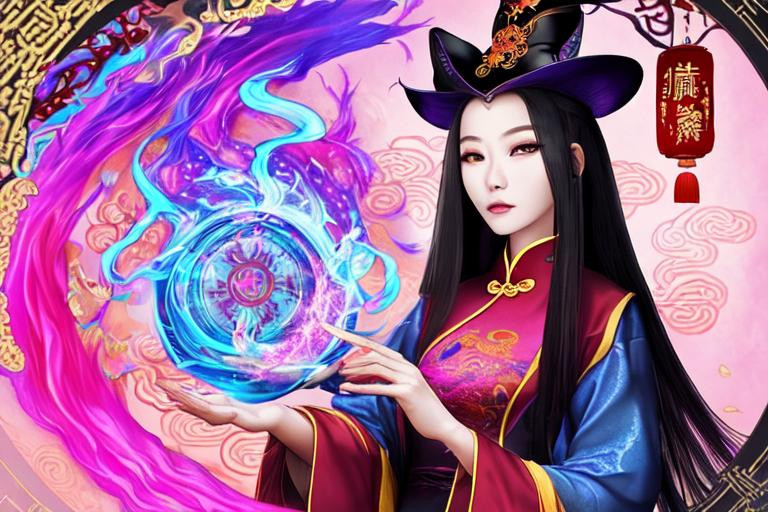
The Number 4: In Chinese culture, the number 4 is considered unlucky because it sounds like the word for death. Many buildings in China skip the fourth floor altogether, and phone numbers with the number 4 are often avoided.
The Number 8: On the other hand, the number 8 is considered lucky because it sounds like the word for wealth. Many Chinese people go to great lengths to secure phone numbers, license plates, and addresses with the number 8.
The Color Red: Red is a powerful color in Chinese culture, symbolizing good luck and happiness. Red is often worn during festivals and weddings, and red envelopes filled with money are given as gifts during the Lunar New Year.
The Color Black: On the other hand, black is associated with death and mourning in Chinese culture. It is considered unlucky to wear black to a wedding or other celebratory event.
The Color White: White is another unlucky color in Chinese culture, as it is associated with death and mourning. White is often worn at funerals and should be avoided during happy occasions.
The Lunar New Year: The Lunar New Year is one of the most important festivals in Chinese culture, and superstitions abound during this time. For example, it is considered bad luck to sweep the house during the first few days of the new year, as it may sweep away good luck.
The Zodiac: The Chinese zodiac is a 12-year cycle, with each year represented by an animal. Superstitions abound regarding one’s zodiac sign and compatibility with others.
The Lucky Charms: Chinese people often carry lucky charms or amulets for protection and good fortune. Some of the most popular lucky charms include red strings, Fu (?) characters, and jade bracelets.
Feng Shui: Feng Shui is a practice that aims to create harmony and balance in one’s environment. Superstitions abound in Feng Shui, with specific placement of furniture and objects believed to bring good luck and prosperity.
Ghost Month: The seventh lunar month is known as Ghost Month in Chinese culture, and it is believed that ghosts roam the earth during this time. Many people avoid making major life decisions or signing contracts during Ghost Month.
Lucky Numbers: In addition to the number 8, many Chinese people also consider the numbers 6 and 9 to be lucky. These numbers sound like the words for “smooth” and “long-lasting,” respectively.
Unlucky Numbers: In addition to the number 4, the number 7 is also considered unlucky in Chinese culture. It sounds like the word for “gone” and is associated with death.
The Four Pillars of Destiny: The Four Pillars of Destiny is a system of astrology used in Chinese culture. It is believed that one’s fate is determined by their birth date and time, and many Chinese people consult astrologers for guidance on important life decisions.
The Hungry Ghost Festival: The Hungry Ghost Festival is a traditional Chinese festival held on the 15th day of the seventh lunar month. It is believed that the ghosts of ancestors are released from the underworld during this time, and offerings of food and incense are made to appease them.
The Dragon Dance: The Dragon Dance is a popular performance during Chinese festivals and celebrations. It is believed that the dragon is a powerful symbol of good luck and prosperity, and the dance is performed to bring good fortune to the community.
The Yin-Yang: The Yin-Yang is a symbol that represents the balance between opposing forces in the universe. It is believed that everything in the world can be divided into Yin and Yang, and achieving balance between the two is essential for good health and harmony.
The Moon Festival: The Moon Festival, also known as the Mid-Autumn Festival, is a traditional Chinese festival held on the 15th day of the eighth lunar month. It is a time for family reunions and the giving of mooncakes, a sweet pastry filled with lotus seed paste or red bean paste.
The Jade Emperor: The Jade Emperor is the ruler of heaven in Chinese mythology. He is believed to preside over the fate and destiny of all living beings and is often worshipped for good luck and protection.
The Five Elements: The Five Elements, also known as the Five Phases, are wood, fire, earth, metal, and water. It is believed that everything in the world can be categorized into one of these elements, and maintaining a balance between them is essential for good health and fortune.
The Lucky Bamboo: The Lucky Bamboo is a popular plant in Chinese culture, often given as a gift for good luck and prosperity. It is believed that the number of stalks in the plant can bring different types of luck.
The Phoenix: The Phoenix is a mythical bird in Chinese culture, symbolizing rebirth and renewal. It is often depicted alongside the dragon, and the two are believed to bring good fortune when displayed together.
The Tiger: The Tiger is one of the twelve animals in the Chinese zodiac and is believed to be a symbol of power and strength. It is often associated with protection and is often displayed in homes and businesses for good luck.
The Crane: The Crane is a symbol of longevity in Chinese culture, and it is often depicted alongside the pine and the bamboo to represent the “Three Friends of Winter.”
The Lion Dance: The Lion Dance is another popular performance during Chinese festivals and celebrations. It is believed that the lion is a symbol of good fortune and is often used to scare away evil spirits.
The Lucky Cat: The Lucky Cat, also known as the Maneki-Neko, is a popular Japanese cat figurine that is often seen in Chinese businesses for good luck and prosperity.
The Phoenix Tail: The Phoenix Tail is a hairstyle that is popular among Chinese women. It is believed to bring good fortune and is often worn during weddings and other important occasions.
The Laughing Buddha: The Laughing Buddha, also known as Budai or Hotei, is a figure in Chinese mythology who is believed to bring happiness and good fortune. He is often depicted with a big belly and a laughing face.
The Wealth God: The Wealth God, also known as Caishen, is a figure in Chinese mythology who is worshipped for good luck and prosperity. He is often depicted holding a gold ingot or a money bag.
The Bagua: The Bagua is a symbol that represents the eight trigrams in Chinese philosophy. It is often used in Feng Shui to bring balance and harmony to one’s environment.
The Ancestor Worship: Ancestor worship is a traditional practice in Chinese culture, where ancestors are venerated and offerings of food and incense are made to them for good luck and protection. It is believed that the spirits of the ancestors can bring good fortune and help with important life decisions.
Chinese superstitions are a fascinating aspect of Chinese culture, and they continue to play an important role in the daily lives of many Chinese people today. From the practice of Feng Shui to the worship of ancestors, Chinese superstitions offer a glimpse into the rich history and traditions of this ancient civilization.
While some of these superstitions may seem strange or even superstitious to outsiders, they are deeply ingrained in the Chinese psyche and offer a sense of comfort and security to those who practice them. They are a way of connecting with the past and honoring the wisdom of previous generations.
Whether you believe in these superstitions or not, there is no denying that they add an element of mystery and intrigue to Chinese culture. From the dragon and lion dances to the use of lucky numbers and colors, these superstitions provide a colorful and witchy glimpse into the beliefs and practices of the Chinese people.
So the next time you see a red envelope or a lucky cat, or witness a dragon dance, take a moment to appreciate the rich symbolism and tradition behind these practices. Whether you’re a believer or a skeptic, there’s no denying that Chinese superstitions add an element of mystery and magic to the world around us.
Ghosts and spirits
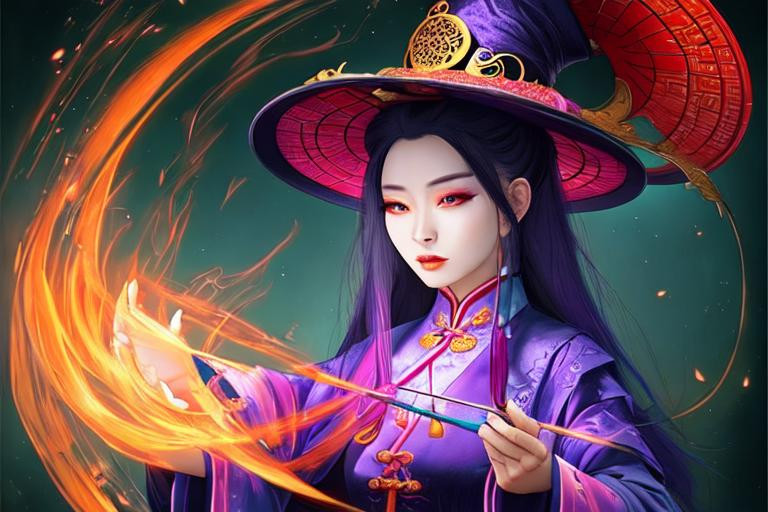
In Chinese culture, ghosts and spirits have long been believed to be a part of everyday life. Many superstitions and beliefs revolve around these supernatural entities, with the idea that they can bring good luck or cause misfortune.
One of the most prominent beliefs is that of the hungry ghost. In Chinese folklore, hungry ghosts are spirits of people who were greedy in life and did not offer enough to their ancestors. As a result, they are cursed to wander the earth forever, constantly hungry and thirsty. To appease hungry ghosts, people offer food and water to the spirits during the Ghost Festival, which falls on the 15th day of the seventh lunar month.
Another belief is that of the ancestral ghost. In Chinese culture, ancestor worship is an important aspect of life. It is believed that the spirits of ancestors can bring good luck and fortune to their descendants. Therefore, offerings such as food and incense are made to honor and respect ancestors. On special occasions such as the Qingming Festival, families will visit their ancestors’ graves to clean and decorate them and offer food and other offerings.
In addition to hungry and ancestral ghosts, there are also many other types of spirits in Chinese folklore. For example, there are fox spirits, which are believed to be mischievous and often take on human form to trick and deceive people. There are also water spirits, which are said to live in bodies of water such as rivers and lakes.
In some Chinese superstitions, ghosts and spirits are seen as protectors or bringers of good luck. For example, it is believed that the ghost of a deceased family member can protect their living relatives from harm. In some regions of China, people will even keep a ghost chair in their homes as a way to invite their ancestors to come and watch over them.
On the other hand, many Chinese superstitions warn of the dangers of ghosts and spirits. For example, it is believed that spirits can become jealous of the living and cause harm. Pregnant women are often cautioned not to attend funerals or visit cemeteries, as it is believed that the spirits of the dead can harm the unborn child. Similarly, it is believed that spirits can cause illness and disease if they are not properly appeased.
In order to protect against evil spirits, many Chinese households will hang a paper charm called a fu on their door. The fu is believed to ward off evil spirits and bring good luck and prosperity to the household.
In Chinese culture, ghosts and spirits are also often featured in literature and art. For example, the classic Chinese novel “Journey to the West” features many supernatural beings, including ghosts and spirits. Traditional Chinese opera and dance also often incorporate elements of supernatural beings and folklore.
In modern times, belief in ghosts and spirits remains strong in many parts of China. In fact, there are even ghost towns, abandoned cities and villages that are said to be haunted by the spirits of those who used to live there. Many people avoid visiting these places, out of fear of encountering vengeful ghosts or other supernatural entities.
Ghosts and spirits play a significant role in Chinese culture and superstitions. Whether seen as protectors or bringers of misfortune, these supernatural entities continue to fascinate and intrigue people around the world.
Ancestor worship
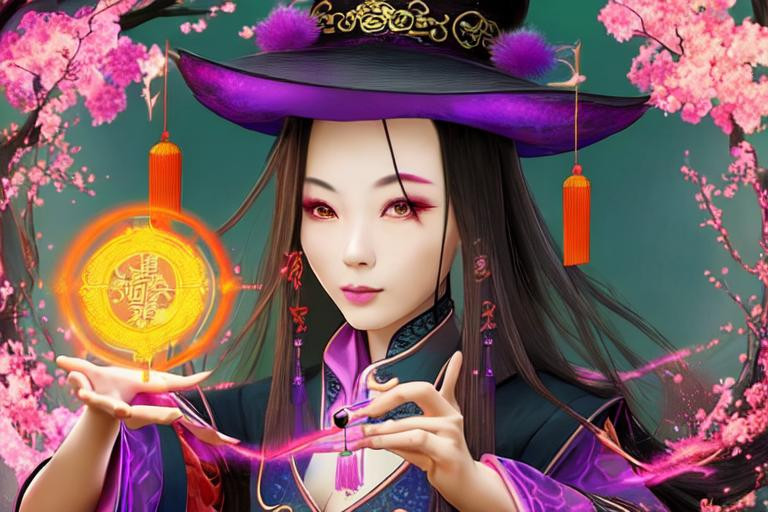
Ancestor worship is an integral part of traditional Chinese culture, and is deeply rooted in Chinese superstitions and beliefs. The practice involves honoring and showing respect to one’s ancestors, with the belief that they continue to play a role in the lives of their descendants.
In Chinese culture, it is believed that the spirits of ancestors can bring good luck, blessings, and protection to their descendants. As a result, ancestor worship is often carried out through offerings and rituals, with the hope of gaining the favor of one’s ancestors.
Ancestor worship is typically carried out in the home, where families will set up shrines or altars dedicated to their ancestors. These shrines are typically decorated with incense, candles, and offerings of food and other items. It is believed that these offerings will provide nourishment and comfort to the spirits of the ancestors, and will help to strengthen the bond between the living and the dead.
One of the most important rituals in ancestor worship is the Qingming Festival, also known as Tomb Sweeping Day. This festival is celebrated on the 15th day after the Spring Equinox, and involves visiting the graves of ancestors to clean and maintain them, as well as to offer prayers and offerings of food and other items.
Another important ritual is the Hungry Ghost Festival, which is celebrated on the 15th day of the seventh lunar month. During this festival, it is believed that the spirits of ancestors who have not been properly honored and cared for may become restless and cause mischief or harm. As a result, offerings of food, incense, and other items are made to these hungry ghosts in the hopes of appeasing them and avoiding any misfortune.
Ancestor worship is also closely tied to the concept of filial piety, which is the idea of showing respect and obedience to one’s parents and elders. In Chinese culture, it is believed that by honoring one’s ancestors, one is also showing respect for one’s parents and elders, and is fulfilling one’s duty as a member of the family.
Ancestor worship is a deeply ingrained part of Chinese culture and superstitions, and is an important way for families to maintain a connection with their ancestors and the spirits of the dead. Through offerings and rituals, Chinese people hope to gain the favor and protection of their ancestors, and to ensure that their spirits continue to play a role in the lives of their descendants.
Taboos and bad luck
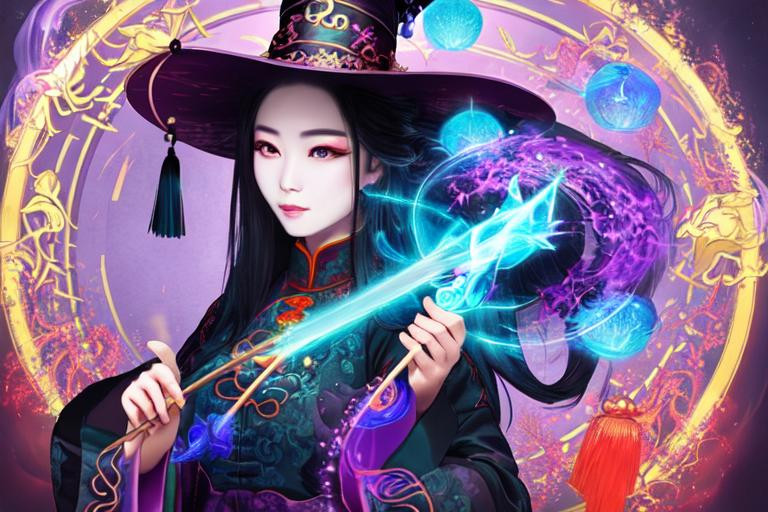
In addition to lucky numbers and symbols, Chinese culture is also full of taboos and beliefs related to bad luck. These superstitions range from everyday behaviors to major life events, and are taken very seriously by many people.
One common belief is that the number four is unlucky, as it sounds similar to the word for “death” in Chinese. As a result, many buildings in China will not have a fourth floor, and many people avoid giving gifts in sets of four. Similarly, the number thirteen is also considered unlucky in Chinese culture, as it is in many other cultures around the world.
Another taboo is related to the color white. In Chinese culture, white is often associated with death and mourning, and is therefore considered unlucky. It is generally avoided in festive occasions like weddings, where red is the color of choice.
Certain animals are also believed to bring bad luck in Chinese culture. For example, it is believed that black cats bring bad luck, and that encountering a black cat can lead to misfortune. Similarly, it is said that seeing a spider in the morning is bad luck, while seeing one at night is good luck.
In addition to these common taboos, there are also many superstitions related to specific life events. For example, cutting one’s hair during the first lunar month is considered bad luck, as it is believed that doing so will result in the death of one’s parents. Similarly, it is believed that giving a clock as a gift is bad luck, as it sounds similar to the phrase “attending a funeral” in Chinese.
Certain foods are also believed to bring bad luck in Chinese culture. For example, it is believed that eating congee (a type of rice porridge) during a funeral will result in bad luck, as the word for congee sounds similar to the word for “mourning” in Chinese.
Finally, it is believed that certain actions can bring bad luck in Chinese culture. For example, whistling at night is said to attract ghosts and spirits, while sweeping the floor at night is believed to sweep away one’s good luck.
Taboos and beliefs related to bad luck are a significant part of Chinese culture and superstitions. While some of these beliefs may seem strange or irrational to outsiders, they are taken very seriously by many people in China and can have a real impact on daily life.
Marriage and love superstitions
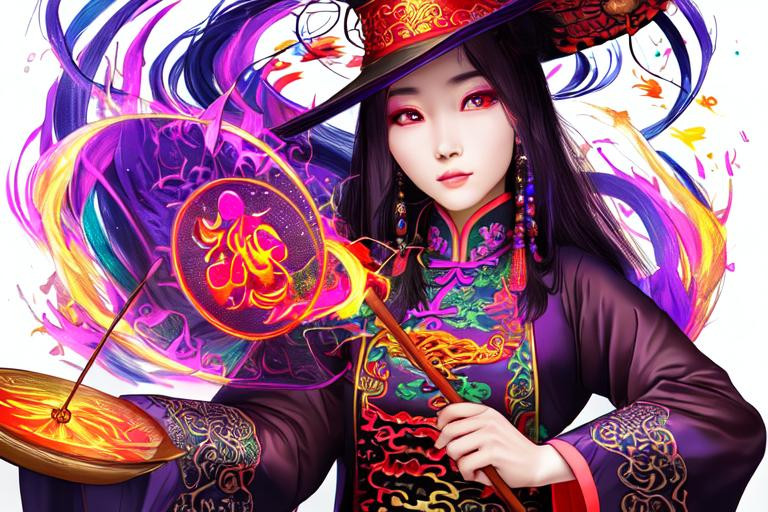
Marriage and love are important aspects of Chinese culture, and there are many superstitions and beliefs related to these topics. These beliefs can range from practical advice for finding a suitable partner to traditional rituals and customs for ensuring a successful marriage.
One common superstition is related to the color red. In Chinese culture, red is considered a lucky color, and is often associated with love and romance. As a result, it is common for couples to wear red clothing or accessories during their wedding day, and for red decorations to be used in the ceremony.
Another superstition related to love and marriage is the idea that the number eight is lucky. This is because the word for “eight” in Chinese sounds similar to the word for “prosperity”. As a result, many couples will choose wedding dates that include the number eight, and may also incorporate the number into their wedding decorations and invitations.
In addition to lucky numbers and colors, there are also many superstitions related to finding a suitable partner. For example, it is believed that couples who are born under compatible zodiac signs are more likely to have a successful marriage. Similarly, it is said that couples who are born in the same year may have a strong bond, as they share the same zodiac animal.
Certain foods are also believed to have a positive effect on love and marriage in Chinese culture. For example, it is believed that eating peanuts on the night of a wedding can bring good luck and fertility to the couple. Similarly, it is said that eating oranges can bring good luck and happiness to a marriage, as the word for “orange” sounds similar to the word for “happiness” in Chinese.
One of the most important rituals related to marriage in Chinese culture is the tea ceremony. This ceremony involves the bride and groom serving tea to their parents and other family members as a sign of respect and gratitude. It is believed that the tea ceremony helps to establish a bond between the families of the bride and groom, and is an important way of showing respect for one’s elders.
There are also many taboos and beliefs related to marriage in Chinese culture. For example, it is believed that getting married during the “Ghost Month” (the seventh lunar month) is bad luck, as this is a time when the spirits of the dead are said to be particularly active. Similarly, it is believed that wearing black to a wedding is bad luck, as black is associated with mourning and death.
Finally, there are many superstitions related to the honeymoon period after a wedding. For example, it is believed that breaking any glassware during this time can bring bad luck to the marriage. Similarly, it is said that sweeping the floor or washing clothes during the first few days of marriage can wash away one’s good luck.
Love and marriage are important aspects of Chinese culture, and are deeply intertwined with superstitions and beliefs. Through lucky colors, numbers, and rituals, Chinese couples hope to ensure a successful and happy marriage, and to navigate the challenges that come with love and commitment.
Superstitions in business
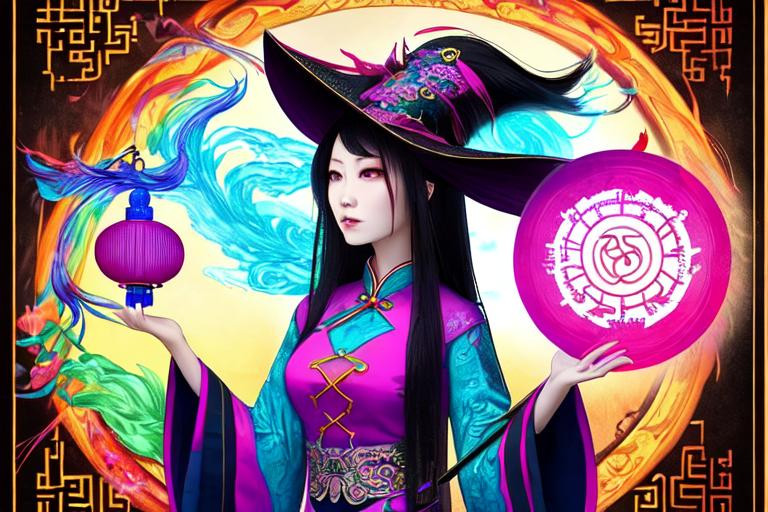
In Chinese culture, business and commerce are deeply intertwined with superstitions and beliefs. Many entrepreneurs and business owners believe that following certain customs and practices can help them achieve success and prosperity in their business ventures.
One common superstition in Chinese business culture is the belief in the power of the color red. Just as in the context of love and marriage, red is considered a lucky color in business, and is often used in marketing and advertising materials. Many business owners will also use red envelopes or packaging to convey good luck and prosperity to their customers.
Another superstition related to business success is the idea of “feng shui”. This ancient Chinese practice involves arranging one’s surroundings in a way that promotes harmony and positive energy flow. Many business owners will consult with feng shui experts to ensure that their office or store layout is optimized for success.
In addition to feng shui, there are also many superstitions related to timing and auspicious dates in Chinese business culture. For example, it is believed that starting a new business or launching a new product during the Chinese New Year can bring good luck and success. Similarly, it is said that choosing a “lucky” date for important business meetings or negotiations can increase the chances of success.
Certain numbers are also believed to be lucky in the context of business. For example, the number eight is considered lucky, as it sounds similar to the word for “prosperity” in Chinese. Similarly, the number nine is believed to be lucky, as it sounds similar to the word for “long-lasting”. Many business owners will choose phone numbers, addresses, and even product prices that include these lucky numbers.
There are also many taboos and bad luck beliefs related to business in Chinese culture. For example, it is believed that sweeping or cleaning the floor during the Chinese New Year can sweep away one’s good luck and prosperity for the year. Similarly, it is said that giving a clock as a gift is bad luck, as the word for “clock” in Chinese sounds similar to the word for “death”.
Finally, there are many superstitions related to the exchange of business cards in Chinese culture. For example, it is considered disrespectful to write on someone’s business card, as this can be seen as a sign of disrespect towards the person themselves. Similarly, it is believed that handing out business cards with one hand or casually tossing them on the table is a sign of disrespect.
Superstitions and beliefs play a significant role in Chinese business culture, and can impact everything from marketing strategies to office layouts to the timing of important meetings and negotiations. By following these customs and practices, business owners hope to increase their chances of success and prosperity, and to navigate the challenges of the competitive business world with the help of good luck and auspicious energy.
Superstitions in martial arts
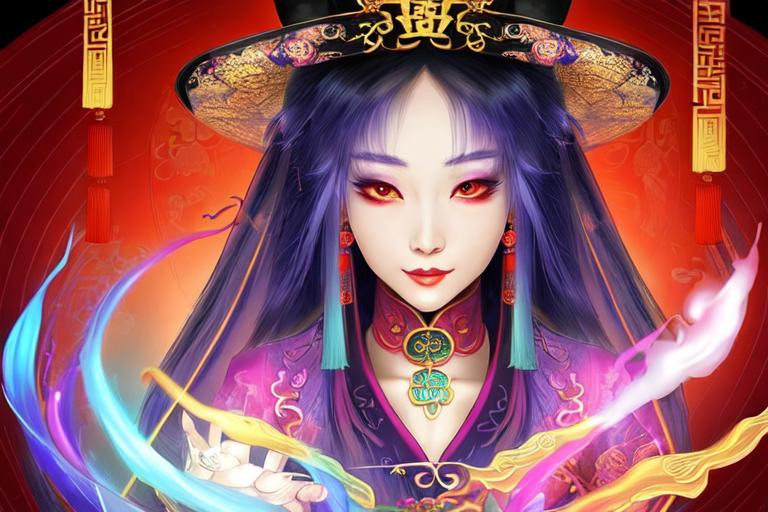
Martial arts have been a part of Chinese culture for thousands of years, and are deeply intertwined with superstitions and beliefs. Many martial arts practitioners and teachers believe that following certain customs and practices can help them achieve success and mastery in their martial arts training.
One common superstition in martial arts culture is the belief in the power of the color red. Just as in the context of business and love, red is considered a lucky color in martial arts, and is often used in training equipment and uniforms. Many martial artists will also wear red clothing or accessories during competitions or demonstrations to convey good luck and success.
Another superstition related to martial arts success is the idea of “feng shui”. Just as in the context of business, feng shui is believed to be an important factor in promoting harmony and positive energy flow in one’s surroundings. Many martial arts schools will consult with feng shui experts to ensure that their training space is optimized for success.
In addition to feng shui, there are also many superstitions related to timing and auspicious dates in martial arts culture. For example, it is believed that starting a new training program or embarking on a new martial arts journey during the Chinese New Year can bring good luck and success. Similarly, it is said that choosing a “lucky” date for important belt tests or competitions can increase the chances of success.
Certain numbers are also believed to be lucky in the context of martial arts. For example, the number nine is considered lucky, as it sounds similar to the word for “long-lasting” in Chinese. Similarly, the number eight is believed to be lucky, as it sounds similar to the word for “prosperity”. Many martial artists will choose training schedules or competition numbers that include these lucky numbers.
There are also many taboos and bad luck beliefs related to martial arts in Chinese culture. For example, it is believed that practicing martial arts in a cemetery or near a funeral procession can bring bad luck and misfortune. Similarly, it is said that wearing white clothing during a martial arts competition can be a sign of disrespect, as white is traditionally associated with mourning and death in Chinese culture.
Finally, there are many superstitions related to the exchange of martial arts skills and techniques. For example, it is considered disrespectful to teach one’s martial arts skills to someone who is not a dedicated student or practitioner. Similarly, it is believed that sharing one’s martial arts skills with someone who is not of the same gender or age can bring bad luck and misfortune.
Superstitions and beliefs play a significant role in Chinese martial arts culture, and can impact everything from training schedules to competition attire to the timing of important belt tests and competitions. By following these customs and practices, martial artists hope to increase their chances of success and mastery in their training, and to navigate the challenges of the martial arts world with the help of good luck and auspicious energy.
Charms and Chinese Superstitions
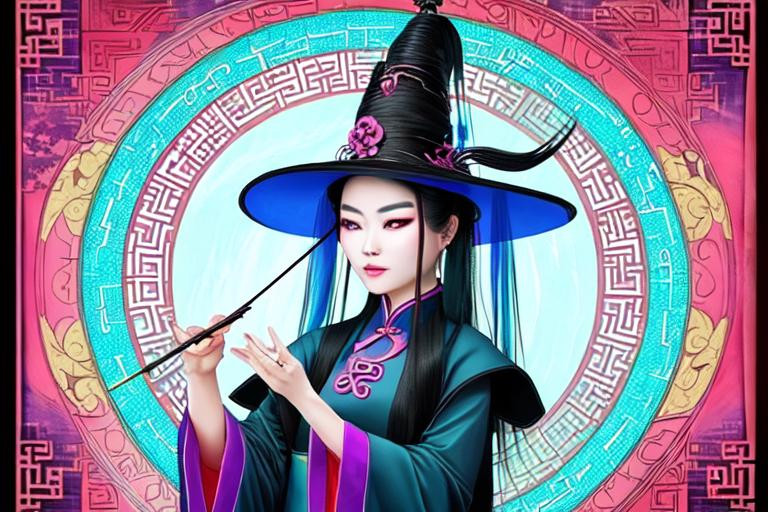
The charm has a prominent part in all primitive religions, especially in those that worship spirits and live in fear of ghosts and spectres. In the earliest times the Chinese people believed in Shnngti, the Supreme Ruler, the genii presiding over mountains and rivers, and the host of spirits that filled the sky. Some of these spirits were considered good, others bad. The good were the protectors of man, the bad, the harbingers of evil, there solely to torment and unsettle. The malignant influence of bad spirits had to be diminished, and charms were used for this practice. The charm is the most effective way of calling spirits, expelling them, warding off and restraining demons, ghosts and entities of all kinds.
Exorcising magic is very old in China, going as far back to Hwangti, the legendary founder of the Chinese Empire, who is said to have lived 2697 years before the Christian era. Others attribute exorcising magic to Lao-tze, the old philosopher, born BC 604, he was the founder of Taoism. Under the Chow Jg) dynasty (BC 1122-249) it was customary for the “Son of Heaven”, rulers and high officials, to be preceded by armed exorcists and sorcerers, there to protect them from malice.
Exorcising ceremonies were performed in Spring, and again in Autumn. In the time of Confucius (BC 551-479), the ridding of demons, and exorcising processions took place on a large scale. Spells were chanted in these processions, they were used against spectres, threats were hurled at the evil beings and they were commanded to “be gone.”
Under the Han gf dynasty (B.C. 206 AD. 221), a system of charms was evolved, this was due to Chang Tao-ling, the first official head of the Taoist church. His followers referred to him as grand “Heavenly master” T’ien-shi. By the age of seven he had mastered all the writings of Lao-tze, and later on received from him a complete knowledge of charms and spells.
After retiring to the “Dragon and Tiger mountain”, Lung-hu-shan, in the province of Kiang-si, created a book of charms to guide the reader in the ways of expelling demons and curing disease.
Taoism is a system of religious magic for expelling and killing evil spirits, ghosts and spectres, and exercising influence over Heaven and Earth, whose regular order, Tao, is destroyed by evil spirits.
Buddhists have their own system of charms which has its, Dlianmi, (formulas) for removing, Mara, (daemons) and ensuring good karma for mankind. Taoist and Buddhist charms are placed beside each other. Buddha’s name is engraved on these charms, he is called the, light of the world, and the universal expeller of demons. They also bear the name of Wei-Vo, or the initial and final syllables of the mystic formula, ilOm! mani padme hum Oh!, the jewel of creation in the Lotus.
The old belief regarding the nature of charms deemed all nature to be animated. Confucianists, Taoists, and Buddhists, all inhabit the world along with countless spirits. These spirits are divided  into two classes, Shen and Kwei, the Shen’ are the intelligent, etherial, part of the universe, the spiritual energies and influences, the benevolent protectors of man and the creators of happiness. The A’wei, belong to a low standard of spirits, they are evil, malignant anarchists, lawless disturbers of the order of the universe. They generally disrupt the world, fostering evil, bringing disease, creating anarchy and mayhem. They are lawless disrupters of the harmony of the Universe who incite evil and disharmony, bringing disease to mankind, causing plagues and epidemics. Ripping away the souls of children and adults, these souls may be restored through animistic magic. The, Sheii, being good and kindly, protectors of man, and the, vwet, evil and malignant, the, Sheii, are called upon as allies in the struggle against evil. Charms are used to activate Divine powers, the, Sheii, are called down to receive sacrifices and bestow benevolence, and to become involved in the wellbeing and balance of mankind. The, Sheii, also command, expel, and counteract the evil intentions of daemons, ghosts, and spectres.
into two classes, Shen and Kwei, the Shen’ are the intelligent, etherial, part of the universe, the spiritual energies and influences, the benevolent protectors of man and the creators of happiness. The A’wei, belong to a low standard of spirits, they are evil, malignant anarchists, lawless disturbers of the order of the universe. They generally disrupt the world, fostering evil, bringing disease, creating anarchy and mayhem. They are lawless disrupters of the harmony of the Universe who incite evil and disharmony, bringing disease to mankind, causing plagues and epidemics. Ripping away the souls of children and adults, these souls may be restored through animistic magic. The, Sheii, being good and kindly, protectors of man, and the, vwet, evil and malignant, the, Sheii, are called upon as allies in the struggle against evil. Charms are used to activate Divine powers, the, Sheii, are called down to receive sacrifices and bestow benevolence, and to become involved in the wellbeing and balance of mankind. The, Sheii, also command, expel, and counteract the evil intentions of daemons, ghosts, and spectres.
Charms are mandates (orders), issued under seal and painted, or written with a cinnabar pencil. They are the principal means of commanding spectres, expelling and killing, Kwei. They help to catch, restrain, imprison, torture, drown, behead, kill and burn all kinds of spectres and ghosts, the written charms are then burnt.
The Chinese world of spirits is modelled after man’s own image, they appear in human shape, have human passions, may be pursued, caught, warded off, and can may be killed. When a, vwe, dies, it becomes a,Tsih, something malevolent and hideous, it terrifies all spectres when they see this character posted over a door during times of evil chaos. The charm is an instrument of religious magic, used to command the evil spirits submission, disarming them, counteracting their influence, and preventing them from injuring man in his present and future life.
Thousands of individuals in China wear charms as amulets, they are posted up over doors, placed under the eaves of houses, attached to beds, curtains, worn in the hair, or put into a red satchel. They are also burnt, the ashes mixed with wine, tea or hot water, and administered as a repellant against bad influences, diseases and attacks from evil spirits. The Chinese attribute them with enormous power, they call down gods to receive sacrifice, and bestow kindness. They promote happiness here and in the afterlife, they promise longevity and a serene old age. They bestow benefits on man, promise a lush harvest, fine weather, sunshine and rain, they end snowfalls, droughts and famine. They protect buildings and houses from evil influences, and expel all kinds of spirits, daemons and spectres, they protect mankind from epidemics and pestilence. They cure almost all diseases which erupt from the flesh, from stomach-aches, headaches, stitches in the side, sore eyes. They cure sadness, fear and anxiety, they can bring back departed souls, or if impossible, improve at least their condition in the “world of shades”. Charms are used to create a happy marriage, promoting harmony, love and understanding, between husband and wife.
Charms have been used to invoke the gods to assist mankind, and to help him overcome the influences of evil. This worship has fostered interest and fear among people. Healing charms, lucky charms, petition charms, have been created by Buddhist monks and Taoist priests, specifically to cure disease, prevent epidemics, expel daemons, dispel evil, and to garner the protection of the gods for all human ills, and for mankind as a whole. Misfortunes which befall mankind are countless, and the drawing up of charms is one of the chief pursuits of Taoist priests, Tao-shi, have some ready for every imaginable situation, disease and condition, to which mortals are exposed.
Taoism has a system of religious magic for expelling and killing Kwei, (evil spirits, ghosts and spectres), and exercising influence over Heaven and Earth, whose regular order Tao, is destroyed by these evil spirits. The making and use of charms and spells, are inseparable from Taoist ritualism. Its priests are wizards and magicians, along with some charlatans thrown in.
During the reign of the Emperor Shun-ti, of the Eastern Han dynasty, Tung-Han, Chang Tan-ling, the first official head of the Taoist magical church, and grand Heavenly Master T’ien-shi, created a book on charms in the mountain of Lung-hu-shan, (the dragon and tiger mountain), in the province of Kiang-si. The book contained ingenious ways of expelling daemons, curing all diseases, and deceiving naive people, who had to give him five bushels of rice, earning him the nickname of “rice-grabber” Mi-tseh.
Magic writings are suspended in homes to ward off evil. Buddhist monks create magic charms, they are written on white, yellow, or red paper, and are written in vermilion ink along with the picture of the God Weit’. They are said to have the power to ward off evil influences, they are made of peach-wood, multicolored and have images of Kiang T’ai-kung, or the God of Riches, Tsai-shen, printed on the charms. They are paid for in rice or money, this payment referred to as the golden revenue derived from charms.
The origin of charms can be traced back to the times of Chang Tao-ling , who used them as a way to extort rice. The Taoist priesthood has followed in his footsteps, and trade in them to-day to earn a living. Buddhist monks, seeing that the business brought in money, imitated the Taoists. Preparing their ink-slabs and cinnabar pencils, began to draw up their own charms, they were intricate tracings, or letters elaborately entwined, with the purpose of exhibiting the benefit and usefulness of their wares. They took them to towns and villages, distributing them to everyone they met, proclaiming aloud their effectiveness in warding off all kinds of evil influence and misfortune.
The Chinese people readily accepted the monk’s scripts, and suspended them in their homes. Buddhist and Taoist priests, Tao-shi made an agreement in favour of their charms, which local officials follow, when they issue a proclamation. Once the people see that it bears the official seal they dare not resist it, knowing that it comes from a lawful government representative. Charms are also given the official government seal of approval. Charms, with a government seal are used to protect man from malignant daemons, causing evil genii to fear the very sight of these Divine mandates, rendering malevolent entities powerless over families who use the charms for protection. All daemons and evil entities fear these charms with their official seal. With these legally sanctioned charms, families are protected from all and any evil intentions and evil entities. The charm is hung up over the entrance to the home, or it may be placed inside the doorway. These protective charms are suspended in houses, placed over doorways, attached to trees and worn as amulets.
Huge tridents drawn with lime-water on city walls, or found on each side of the city gates and beside the doors and windows of private houses, are charms endowed with magic power. These white tridents are effective for driving away malicious daemons who venture into the city, or come near people’s homes. These charms are used during prolonged drought, epidemic, officials have them traced on walls to dispel evil influences, and to restore harmony, balance and wellbeing among the people. Charms are divided according to the purpose for which they are used. Drawings are in harmony with the colour of the paper they are written on. These charms are exceptionally powerful against ghosts and demons, whom they scare away.
There are charms made specifically for exorcising. Buddhist and Taoist priests, Tao-shi, burn these charms and the petition written on them, during the ceremony known as Ta-tsiao, thanking the Gods for the deliverance of souls in Hades, and also during the ceremony called, Begging for Peace, P’ing-ngan-hsiang. It is an all-powerful charm specially for expelling malicious daemons who harm and injure mortals. The name of the person for whose benefit the ceremony has been performed, as well as the date at which it has taken place, are written on the space left blank for that purpose.
Charms are made to protect people’s homes from fire, they are used by Taoist priests, Tao-shi, to inform, Yen-li, the God of Fire, when a family has suffered an incident. The person whose house 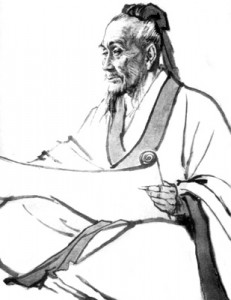 has been burned must not enter the house of others during the three days subsequent to the fire. It is only when the Taoist priests, Tao-shi, have completed the expiatory ceremony at the scene of the disaster, after this time they may resume their usual interactions with their neighbours. The priests suspend the five charms, each with five different colours, placed towards the five directions of the compass. Green towards the East, red towards the South, yellow towards the West, blue towards the North, and violet in the Centre. Each sheet bares one of the names of the Five Elements, metal, wood, water, fire and earth, Kin, muh, shui, hwo. When Buddhist priests are summoned to pray on the scene of the disaster, they write on the charred buildings the character, water, Shui, enclosing it within a circle. As the walls are generally blackened by the smoke and flames, they use lime-water to trace these circles, and write out the characters.
has been burned must not enter the house of others during the three days subsequent to the fire. It is only when the Taoist priests, Tao-shi, have completed the expiatory ceremony at the scene of the disaster, after this time they may resume their usual interactions with their neighbours. The priests suspend the five charms, each with five different colours, placed towards the five directions of the compass. Green towards the East, red towards the South, yellow towards the West, blue towards the North, and violet in the Centre. Each sheet bares one of the names of the Five Elements, metal, wood, water, fire and earth, Kin, muh, shui, hwo. When Buddhist priests are summoned to pray on the scene of the disaster, they write on the charred buildings the character, water, Shui, enclosing it within a circle. As the walls are generally blackened by the smoke and flames, they use lime-water to trace these circles, and write out the characters.
Therapeutic charms are the most sought after, and are one of the most profitable for the monks. The magic scripts for these charms are the most prolific. They can prevent and cure disease. Every kind of illness has its own particular energy.
Buddhist priests, with their magic spells and prayers, pretend they have the power to transfer the disease of a child into a paper puppet picture, male or female, printed on a paper charm. The charm is burnt afterwards, and the trick is played, the disease then vanishes. This charm is called a substitute-charm, as a paper-puppet is substituted for a living person, and the disease of the person is transferred to the paper puppet and the charm burnt. This paper-puppet is taken outdoors to an isolated location, where it is burnt.
A soul restoring charm, is considered one of the most important charms, this charm is used when a disease endangers the life of a child, parents obtain the charm and place it beneath the pillow to bring back the soul as quickly as possible. A gourd-shell, hermetically closed, is attached to a horse’s saddle. This contains the soul and brings it back to its rightful owner.
Therapeutic charms are made corresponding to the twelve animals of the Chinese astrological chart. The Buddhist priest writes the name of the patient, and the name of the animal presiding over the year they were born. When the Buddhist priest comes to the home of a sick person, they burn the relevant charm during the ceremony. If the patient is born in the year of the “Rat,” the Buddhist priest takes a charm and writes the name of the Rat in the blank space and adds the date. The charm is then burnt and the patient cured.
Charms to ward off contagious diseases are made by Taoist priests, they suspend the charm in a house, and burn it while chanting magic words to ward off diseases. Charms were suspended over the doorways of pagan households in 1907, this was done to protect the inhabitants from an epidemic.
Buddhist or Taoist priests, Tao-shi, write out the name of a person, also the year, month and day it was drawn up. It is then attached to a wall in the shape of a proclamation. Finally it is burnt to ensure their safe passage into the afterlife.
To cure a cough, the carefully prepared charm is burnt, the ashes are then steeped in a mixture of turnips and taken by the afflicted person, the cough is then relieved.
For the relief of excessive heart throbbing, a charm is pasted over the chest, then burnt, the ashes mixed with wine or tea, the mixture is then given to the sufferer.
To eliminate typhoid fever, the Spirits of the “Five Directions” are summoned to eradicate the disease. The charm is hung up to scare away the daemons causing the epidemic. After the charm has been placed and seen by the evil entities, it is burnt, the ashes put in tea and ingested by the sick person.
To stop stomach aches, turnips are boiled to a pulp and strained, the paper charm burnt, and the ashes mixed with tea, then given to the sufferer to drink. A multi charm is used to cure heart problems and headaches, the priest places the written charm onto the affected area, the charm is then burnt and the ashes mixed with tea or wine and given to the sufferer.
This charm for sore eyes contains various incantations designed to conjure up the Dragon, waters, and all cleansing sources. The eyes must be first rubbed with the charm, it is then burnt and the ashes steeped in tea and given to the sufferer. An asthma charm is used to dry up inflamed membrane and reduce constricted breathing passages. The charm is written then burnt, the ashes steeped in tea and given to the sufferer. To cure a fever and bring down the temperature, The Gods of the Nine Great Rivers of the Universe, are summoned, and the divinities that watch over the canals of the country. The gods and Divinities are pleaded with to cool the atmosphere quickly.
A charm for dispelling sadness and anxiety, is suspended in the patient’s room then burnt, the ashes mixed with tea and given to the patient to drink. To dispel fear a charm is written, then suspended over a door, burnt and the ashes mixed with tea and drunk. This is a very popular charm, especially among the older generation.
Buddhists make up a specific charm to ensure a pregnant woman a safe delivery and a healthy baby. The charm is sold by the priests, it is attached to the bed head and once the mother has delivered, the charm is burnt and the ashes scattered to the four winds. For hastening delivery during a difficult childbirth the Buddhist priests use a specific charm exclusively for this purpose, the Buddhist priests, invoke Jil-lai Buddha, the priests beg the Dragon to come to the aid of the woman and help her bear a male child. This is a particularly effective and often used charm.
There is a very special charm used for women who are pregnant, to help protect them and their baby during the confinement. The priest prepares the charm and attaches it to the pending mother’s stomach, it is then removed and burnt, the ashes are placed in the soil.
To protect from malevolent ghosts, the charm is worn on, or sewn on to the person’s clothes to secure protection from the evil spirits, and attacks from ghosts and any other malevolent entities. A women who lived in the district of Hanshan-hsien, Nganhwei province, pretended she saw a ghost leave its tomb carrying a bunch of flowers. When news of the apparition spread around the world, thousands of people flocked to the spot where the sighting occurred. A small hole was discovered in the coffin as the decaying wood had been falling apart over the previous ten years. Buddhist and Taoist priests, Tao-shi, were immediately summoned, and endless charms were written out in order to secure protection from ghosts.
To restore the soul that has recently left the body, the spirit must immediately be pursued and grasped. When this is done, the soul is compelled to re-enter the body it has just left. To accomplish this purpose the charm is burnt and the ashes mingled with some tea and ingested by the soul’s owner.
A charm to cure all disease is prepared and used by Buddhist priests. The Taoist charm has the names of the Three Taoist Heavens, the Three Divinities, which are the Taoist Trinity. It is then burnt and the ashes scattered.
There are five particular charms used exclusively by Taoists, while performing the ceremony known as Ta-tsiao, thanking the Gods for the deliverance of souls from Hades. These charms are hung strategically towards the five directions. With each sheet containing a prayer to the Taoist Gods. They are all burnt during the ceremony, this conveys the petition to the proper divinity.
Charms to ensure a bountiful harvest, take place when the first blade of corn sprouts. The priests go into the fields and suspend five written charms of five different colours, from reeds. The priests then place them at the four cardinal points and one in the centre. They chant then burn the sheets. The charm is divided into four parts, each part bearing an animal picture, dragon, horse, phoenix and the stork.
A very popular charm to call down heavenly consolation, is said to bestow sweet dew from above. Drawing down from the blissful home of the Gods, the sweet dew of consolation upon all desolate of heart. A charm hung in almost every pagan house is a charm that holds a wish for prosperity and good luck. There are four special characters written distinctly, they are entwined to form a magical cipher.
There is a very special charm, known as the charm of “universal efficacy.” The charm is called, Wan-ling-fu, and used by Taoist priests as they perform the ceremony called, Ta-tsiao, (delivering souls from Hades). A powerful charm ensuring the three blessings, happiness, abundance and longevity is made with three characters to represent the three wishes.
The prayer charm for an increase of fortune sends a message to the Gods begging them for assistance. This charm is used exclusively by Taoist priests. A luck bearing charm is suspended from the ceiling of the home on the fifth day of the fifth month, this is to ensure peace throughout the year. The seal of one of the local deities is placed on top of the charm, it is a deity whose statue is placed in a local temple. Buddhist and Taoist priests go from door to door selling their charms and are very well paid for their wares.
The cipher, representing longevity, is beautifully drawn on a large scroll then suspended in the hallway of the home, it has a place of honour. The family worships it as some kind of God, they burn incense, candles and make offerings. They pray in front of it and are very superstitious in their reverence, believing they will be promised a long life, prosper, have health, happiness and abundance. This character is drawn on gilt paper and sent as a gift to those celebrating their sixtieth birthday.
The Pah-kwa or Eight Diagrams, are placed above the entrance to the home, they are mystical symbols, promising good luck, wellbeing and protection from evil spirits. The charm known as the “Ivie Poisons,” is used for protection and exorcising. It is hung on the fifth day of the fifth month.
The Buddhist priests of the temple do a wonderful trade in magic charms, thousands of pilgrims purchase them at the pilgrim resort, the shrine in honour of Ti-ts’ang-wang. On top of the charm is the seal of the God stamped by the Buddhist priests.
According to Taoist teaching, every human being is a living incarnation of a star. If someone is ill, the star incarnated within them is invoked, and a stellar charm is created. There are numerous stellar charms offering protection, good luck, healing and prosperity, the paper charms are burnt as part of the charm ritual.
Charms for any conceivable reason, or occasion, can be created by the Buddhist priests and Taoists. Your intention when using a charm, along with the magical elements called upon, activates the power held within.

